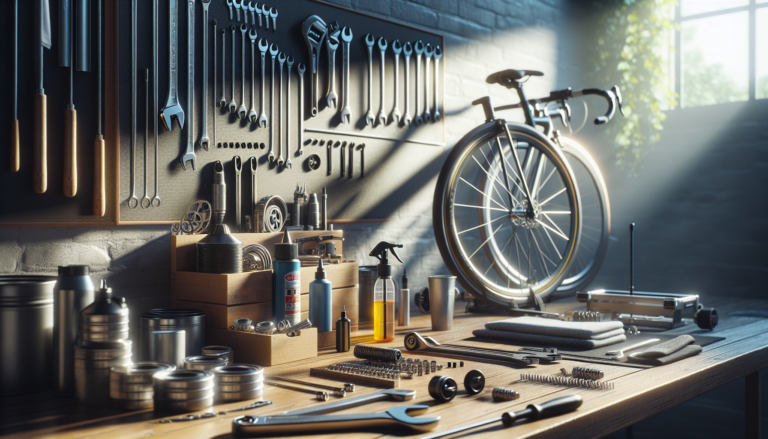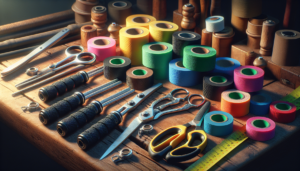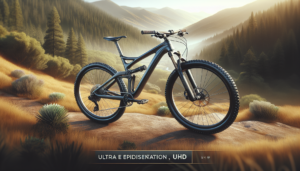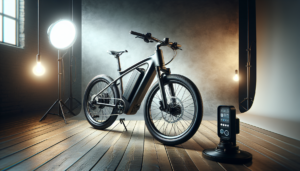Introduction to Bike Maintenance
Bike maintenance is an essential aspect of being a responsible cyclist. By keeping your bike in good working order, you can ensure a safe, enjoyable, and efficient riding experience. Regular bike maintenance not only prolongs the life of your bicycle but also helps prevent accidents and breakdowns. This comprehensive guide will cover the basics of bike maintenance, including pre-ride inspections, essential maintenance tasks, tools and supplies, advanced tips, and ways to improve your maintenance skills.
Whether you’re a seasoned cyclist or just starting, understanding and practicing proper bike maintenance is crucial. By taking care of your bike, you’ll be able to ride with confidence, tackle longer distances, and enjoy the many benefits of cycling. So, let’s dive into the world of bike maintenance and learn how to keep your trusty two-wheeled companion in top shape.
Pre-Ride Inspections
The Importance of Pre-Ride Inspections
Conducting a pre-ride inspection is a crucial habit that every cyclist should adopt. By taking a few minutes to check your bike before each ride, you can identify potential issues and ensure your safety on the road. A thorough pre-ride inspection can help you catch problems like loose bolts, worn brake pads, or low tire pressure, allowing you to address them before they lead to accidents or mechanical failures.
Pre-ride inspections not only enhance your safety but also give you peace of mind, knowing that your bike is in good working order. Additionally, regular inspections can help you spot wear and tear early on, enabling you to plan for maintenance or replacements before they become urgent.
How to Perform an ABC Bike Check
One easy-to-remember method for conducting a pre-ride inspection is the ABC Bike Check. This acronym stands for Air, Brakes, and Chain, three key components that require attention before every ride. Here’s how to perform an ABC Bike Check:
- Air: Check your tire pressure and inflate them to the recommended PSI. Properly inflated tires provide better traction, handling, and puncture resistance.
- Brakes: Inspect your brake pads for wear and test your brakes to ensure they are functioning properly. Make sure there is no rubbing or squealing when you apply the brakes.
- Chain: Look for any signs of rust, grime, or excessive wear on your chain. A well-lubricated chain will run smoothly and efficiently, prolonging its lifespan.
By making the ABC Bike Check a regular part of your pre-ride routine, you can quickly identify and address any issues before they become more serious.
Conducting an M-Check
In addition to the ABC Bike Check, another comprehensive pre-ride inspection method is the M-Check. The M-Check involves systematically examining your bike from front to back, following an M-shaped pattern. This check covers more components than the ABC method, ensuring a thorough inspection of your entire bicycle. Here’s a step-by-step guide to conducting an M-Check:
- Start at the front wheel, checking the tire pressure, quick release, and hub.
- Move up to the handlebars, ensuring they are straight and secure.
- Check the stem and headset for any looseness or play.
- Inspect the frame for any cracks or damage.
- Check the pedals and cranks, ensuring they are tight and spinning smoothly.
- Examine the rear wheel, checking the tire pressure, quick release, and hub.
- Test the brakes and gears, making sure they are functioning properly.
By taking the time to perform an M-Check before your rides, you can have greater confidence in your bike’s safety and performance.
Essential Bike Maintenance Tasks
Cleaning and Lubricating Your Bike
Regular cleaning and lubrication are essential for maintaining your bike’s performance and longevity. Dirt, grime, and moisture can lead to corrosion and premature wear on your bike’s components. To keep your bike running smoothly, follow these cleaning and lubrication tips:
- Clean your bike regularly using a mild soap, water, and a soft brush or sponge. Avoid using high-pressure water, as it can damage bearings and seals.
- Use a degreaser to remove stubborn grime from your chain, cassette, and chainrings. Apply the degreaser, let it sit for a few minutes, then scrub with a brush and rinse thoroughly.
- After cleaning and drying your bike, apply a quality lubricant to the chain, derailleur pivots, and other moving parts. Use a wet lube for wet or muddy conditions and a dry lube for dry conditions.
- Wipe off any excess lubricant to prevent dirt from sticking to your components.
By cleaning and lubricating your bike regularly, you can extend the life of your components and ensure optimal performance.
Checking and Maintaining Tire Pressure
Proper tire pressure is crucial for a safe and efficient ride. Underinflated tires can lead to pinch flats, poor handling, and increased rolling resistance, while overinflated tires can result in a harsh ride and reduced traction. Follow these guidelines for maintaining proper tire pressure:
- Check your tire pressure before every ride using a reliable tire pressure gauge.
- Refer to the recommended pressure range printed on your tire sidewall. This range may vary depending on your tire size, riding style, and terrain.
- For narrower tires (under 32mm), aim to check and adjust pressure daily. Wider tires can be checked weekly.
- Always carry a portable pump or CO2 inflator for on-the-go adjustments and flat tire repairs.
By keeping your tires properly inflated, you can improve your bike’s performance, reduce the risk of flats, and extend the life of your tires.
Inspecting and Replacing Brake Pads
Your bike’s brake pads are essential for safe stopping and control. Over time, brake pads wear down and lose their effectiveness, requiring regular inspection and replacement. Here’s how to maintain your brake pads:
- Visually inspect your brake pads for wear before each ride. Look for any cracks, glazing, or uneven wear.
- Most brake pads have wear indicators, which are small grooves or notches. When these indicators are no longer visible, it’s time to replace the pads.
- If you notice a decrease in braking performance or hear squealing noises, your pads may need adjustment or replacement.
- When replacing brake pads, always use the correct type and size for your specific brakes. Consult your bike’s manual or a professional if unsure.
By keeping a close eye on your brake pads and replacing them when necessary, you can ensure reliable stopping power and maintain control of your bike in various riding conditions.
Tools and Supplies for Bike Maintenance
Must-Have Tools for Every Cyclist
To perform basic bike maintenance and repairs, every cyclist should have a few essential tools in their kit. These tools will help you tackle common issues and keep your bike running smoothly. Here are some must-have tools for every cyclist:
| Tool | Purpose |
|---|---|
| Bike Multitool | A compact tool featuring various hex wrenches, screwdrivers, and a chain tool for on-the-go adjustments and repairs. |
| Tire Levers | Used for removing and installing tires when fixing flats or replacing tubes. |
| Portable Pump or CO2 Inflator | Essential for inflating tires and fixing flats during rides. |
| Patch Kit and Spare Tube | For repairing punctures and replacing damaged tubes while on the road. |
| Lubricant and Cleaning Supplies | For regular cleaning and lubrication of your bike’s components. |
By keeping these essential tools on hand, you’ll be prepared to handle most common bike maintenance tasks and roadside repairs.
Using a Bike Repair Stand
A bike repair stand is an invaluable tool for anyone serious about bike maintenance. This stand holds your bike securely at a comfortable working height, allowing you to easily access all components for cleaning, adjustments, and repairs. Here’s how to use a bike repair stand:
- Clamp your bike securely by the seatpost or top tube, ensuring that the clamp is tight but not overly so to avoid damaging your frame.
- Adjust the stand’s height so that your bike is at a comfortable working level, typically around waist height.
- Rotate your bike as needed to access different components, such as the drivetrain, brakes, or wheels.
- When finished, carefully release the clamp and remove your bike from the stand.
Using a bike repair stand makes maintenance tasks more comfortable and efficient, allowing you to work on your bike without straining your back or struggling to access hard-to-reach areas.
Advanced Bike Maintenance Tips
Understanding Your Bike’s Drivetrain
Your bike’s drivetrain is the system that transfers power from your pedals to the rear wheel, consisting of the chain, cassette, chainrings, and derailleurs. Understanding how your drivetrain works can help you diagnose issues and perform more advanced maintenance tasks. Here are some key points to keep in mind:
- Keep your drivetrain clean and well-lubricated to ensure smooth shifting and extend its lifespan.
- Regularly inspect your chain for wear using a chain wear tool. Replace your chain when it reaches 0.5% to 0.75% wear to prevent damage to other drivetrain components.
- When replacing your chain, consider also replacing your cassette and chainrings if they show signs of wear.
- Learn how to adjust your front and rear derailleurs for crisp, precise shifting. Consult your bike’s manual or a professional for guidance.
By understanding your bike’s drivetrain and performing regular maintenance, you can ensure optimal performance and extend the life of these critical components.
When to Visit a Bike Mechanic
While many bike maintenance tasks can be performed at home, some issues may require the expertise of a professional bike mechanic. Here are some situations when visiting a bike mechanic is recommended:
- If you’re unsure how to diagnose or fix a problem, consult a mechanic to avoid causing further damage.
- For complex repairs or adjustments, such as suspension servicing, wheel truing, or headset replacements, it’s best to rely on a professional.
- If your bike has been involved in a crash or impact, have a mechanic inspect it for any damage to the frame, fork, or components.
- Consider scheduling regular tune-ups with a mechanic, typically every 6 to 12 months, to ensure your bike remains in top condition.
Remember, while learning bike maintenance is valuable, there’s no shame in seeking professional help when needed. A skilled bike mechanic can provide expert advice, perform complex repairs, and help keep your bike running safely and efficiently.
Learning and Improving Your Bike Maintenance Skills
Attending Maintenance Classes
One of the best ways to improve your bike maintenance skills is by attending maintenance classes or workshops. Many bike shops, community organizations, and cycling clubs offer classes for all skill levels. Here are some benefits of attending maintenance classes:
- Learn from experienced mechanics who can provide hands-on guidance and answer your questions.
- Gain confidence in your ability to diagnose and fix common bike issues.
- Meet other cyclists who share your interest in bike maintenance, creating opportunities for knowledge sharing and community support.
- Discover new tips, tricks, and best practices for maintaining your bike.
By investing time in attending maintenance classes, you can deepen your understanding of bike mechanics and become a more self-sufficient cyclist.
Online Resources for Bike Maintenance
In addition to in-person classes, there are countless online resources available for learning bike maintenance. Here are some popular options:
- YouTube Channels: Park Tool, Global Cycling Network (GCN), and numerous other channels offer detailed video tutorials on various maintenance tasks.
- Websites and Blogs: Sites like Sheldon Brown, Bike Radar, and CyclingTips provide articles, guides, and forums dedicated to bike maintenance and repair.
- Manufacturer Resources: Many bike and component manufacturers offer online manuals, technical documents, and support pages specific to their products.
- Social Media: Joining bike maintenance groups on platforms like Facebook and Reddit can connect you with experienced mechanics and fellow cyclists who can offer advice and support.
By exploring these online resources, you can find answers to your maintenance questions, discover new techniques, and continue learning at your own pace.
Conclusion
Bike maintenance is an essential skill for every cyclist, ensuring a safe, enjoyable, and efficient riding experience. By understanding the basics of bike care, performing regular inspections and maintenance tasks, and investing in learning and skill-building, you can become a more self-sufficient and knowledgeable cyclist.
Remember, bike maintenance is an ongoing process that requires patience, practice, and a willingness to learn. Start with the fundamentals, such as the ABC Bike Check and M-Check, and gradually build your skills and knowledge over time. Don’t hesitate to seek guidance from experienced mechanics, attend classes, or explore online resources when needed.
By taking care of your bike, you’re not only prolonging its life but also deepening your connection to the joys of cycling. A well-maintained bike is a reliable companion that will carry you on countless adventures, whether you’re commuting to work, exploring new trails, or embarking on long-distance tours.
So, embrace the art of bike maintenance, and enjoy the freedom, confidence, and satisfaction that comes with being a skilled and responsible cyclist.






